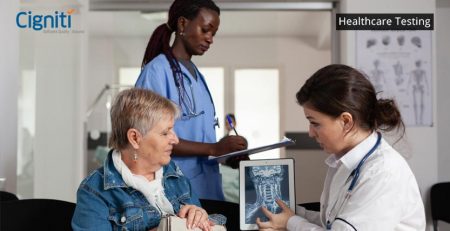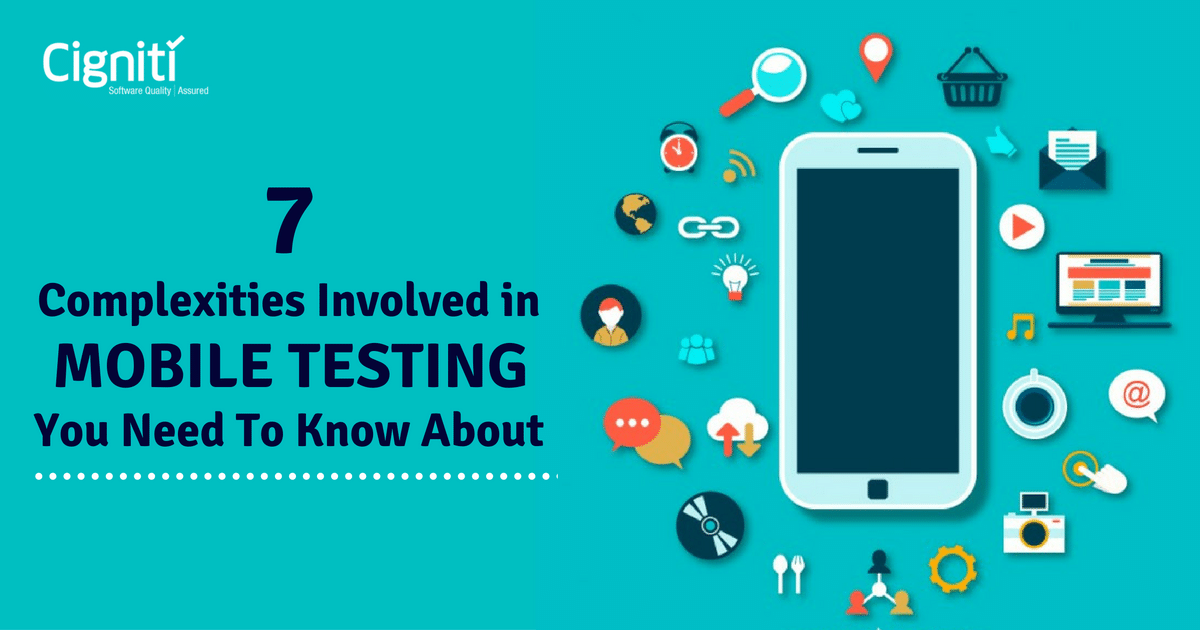The importance of testing mHealth apps for creating valuable patient experiences
The rising cost of patient care have resulted in the emergence of consumerism in healthcare. Today, patients expect a retail-like experience from their healthcare providers in exchange of the dollar bills they are spending.
With this rapidly growing consumerism mindset of patients, the care providers must shift their care-delivery strategy from business-centered to patient-centered. In order to create a valuable experience, the healthcare sector needs to undertake an IT-driven approach, comprising of innovative outlook and technology.
In a recent report, the Medical Group Management Association (MGMA) outlined the 6 technologies that are positively affecting the healthcare operations for patient engagement and practice workflow:
- Patient Portals
- Automated appointment reminder systems
- Check-in technologies
- Telehealth
- Digital payment options
- Data analytics
Florian Otto, MD, co-founder, and CEO of Cedar, who collaborated with MGMA for this report, puts it aptly – “In order to truly prioritize the patient, delivering a more consumer-friendly experience must extend across the entire patient journey — from checking in for an appointment to the clinical encounter to bill payment. This personalization starts with data and technology.”
As 70% of the healthcare providers plan to incorporate these six technologies for optimizing their practices, it becomes evident that patient-centered care is gaining prominence and changing the way healthcare is provided and received. The omnipresence of mobile devices is providing the healthcare industry with the opportunity to improve patient engagement and provide more personalized care.
mHealth applications are forming the bridge between care providers and patients, while offering them a shared platform to interact without the frustrating waiting period. Such applications enliven the dream of remote care delivery or telemedicine. There are more than 3,00,000 mHealth applications available in the market, each of them contributing toward improving the doctor-patient relationship. These applications digitize the clinical interaction between care receivers and providers, thus, reducing the need for on-site visits and augmenting the quality of care.
Moving toward patient-centered care
The Agency for Healthcare Research and Quality (AHRQ) defines patient experience as “the range of interactions that patients have with the healthcare system, including their care from health plans, and from doctors, nurses, and staff in hospitals, physician practices, and other health care facilities.” As per AHRQ, patients highly value timely appointments, easy access to information, and good communication with healthcare providers.
In order to facilitate this seamlessly, dissolution of traditional siloes in healthcare is imperative. With the existing siloed structure, it is not possible to establish a transparent and quick channel through which information is shared. Without a free flow of information across different departments, the possibility of mHealth applications will be non-existent. If the departmental walls are still there, it will be infeasible to yield quick outcomes.
The Healthcare Executive Group (HCEG) listed costs, transparency, and customer experience as the top challenges that industry leaders are facing today. They are required to understand and address the gaps in current health care work flow, assure that all the patient-provider interactions are efficient and streamlined, and implement strategies and tactics to control the growing costs and their impact on access to quality care.
By leveraging data to empower accessible points of care such as telehealth and mHealth applications, healthcare executives can play a pivotal role in integrating a cohesive care delivery strategy into everyday lives of patients. As technology is at the core of such patient-centered strategies, it is critical to ensure that the convergence of care receivers and providers on the IT-driven platform is indeed a valuable one.
The impact of a well-tested mHealth application
The existence of silos in healthcare was for protection of the sensitive and confidential patient information. As the patients today are expecting the retail-like service, they are ready to share their personal information so long as it is protected and used well. They realize that patient data is essential for creating personalized experiences. This information sharing is performed based on trust and understanding that their data will be safeguarded and utilized to offer a seamless patient experience to them.
The technically-sound patients, and consumers in general, correlate the quality of a service directly with the usability. The UX of an mHealth application contributes to patients’ judgement of the service quality. If the application has a non-intuitive design, the user will not trust it and consequently, will not use it.
From usability to functionality, everything is supposed to work glitch-free for the patients to place their confidence in a given mHealth application. If the application performs well, has a great user interface, and functions seamlessly, it becomes a key to catalyzing more acceptance among the patients who are apprehensive of telemedicine and remote care technologies.
The purpose of these telehealth or mhealth applications is to deliver care faster with no queues and faster assistance. If these applications crash or are slow in their pace, they would defy their main goal of providing effortless healthcare services.
Cybersecurity is another major concern that contributes to the apprehension related to the adoption of mhealth. With the volumes and sensitivity of the information that is shared on the digital platforms, it is imperative that all the walls around the application are fortified with robust security measures.
In Conclusion
The healthcare industry thrives on trust. A patient has to trust the doctor for receiving the treatment. If the trust is absent, the patient-doctor relationship will sink. As the dynamics of this relationship are changing with evolving technologies, breaking silos, and increasing digitization, application testing remains the only way of upholding the trust and faith.
Nathaniel Lacktman, Chair of the national Telemedicine & Digital Health Industry Team at Foley & Lardner LLP, affirms, “Good medicine should be more than merely treating a disease; it should also offer patients a satisfying experience at an affordable price point.”
In order to materialize this, it is essential that mHealth providers integrate software testing as a core component of their digital health strategy.
Cigniti offers Healthcare and LifeSciences software testing solutions for diverse lifescience and healthcare players such as hospitals, pharmaceutical companies, healthcare services, clinical labs, diagnostic centers, third-party administrators (TPA), payers, medical equipment manufacturers, healthcare ISVs, and research organizations. Cigniti lays a strong emphasis on government regulations, compliance, coding standards, registry, reforms, standards, surveillance programmes, healthcare education, and more. We have an excellent track record in providing Advisory & Transformation services, Test Automation, and Performance, Functional, and Security Testing solutions. Connect with us today.





Leave a Reply